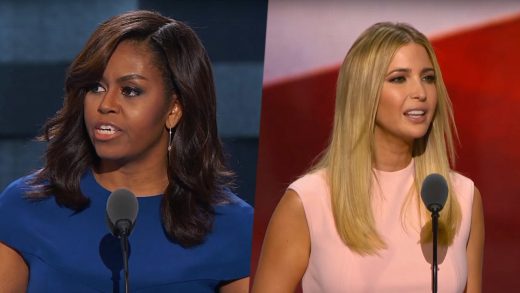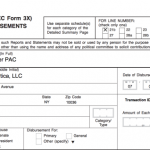Michelle Obama And Ivanka Trump Show You Two Ways To Give A Knockout Speech
There are many ways to be a bad speaker and many ways to be a good one. Those twinned truths have been on display during the Republican and Democratic National Conventions this week and last. And while their backgrounds and politics differ quite a bit, Michelle Obama and Ivanka Trump delivered two of the most memorable and compelling addresses—for similar but different reasons.
Trump’s approach could be summed up as intense, but it wasn’t over the top. She sounded focused. You could call it a “drumbeat” style. The First Lady was no less impactful, but she made a more emotional appeal—her style was more “cinematic.” Here’s a look at how and why both of those approaches worked so well—and how to use them yourself.
Ivanka Trump
Ivanka Trump repeatedly punctuated her speech with sharp, punchy headlines. The theme was clear and easy to sum up: “My father is a fighter.”
At about 2:10 in the video above, she was already using rhythm to underscore this headline, saying:
I have seen him fight for his family. I have seen him fight for his employees. I have seen him fight for his company. And now, I am seeing him fight for our country.
In fact, she used some version of the word “fight” 12 times in her speech—repeating it strategically in order to build intensity. But occasionally, Ivanka slipped into a more subtle, offbeat rhythm. Take a look at the 5:40 mark, where she says, “Competence in the building trades is easy to spot, and incompetence is impossible to hide.”
Listen to how that sounds, and compare it with the more intensified drumbeat of the “fight” lines earlier. Her beat here is more subtle, but this rhythmic dimension to her speech hasn’t changed—she’s just adjusted the tempo.
The upside to this style is that it lets you build a compelling focus around your message: fight, fight fight! Perhaps because of this intense focus, Ivanka Trump delivered only one memorable visual: the image of her playing with Legos in her father’s Trump Tower office (3:00).
The downside here is that you may go a little too “heavy metal”—too much raw energy. You might forget about varying your facial expressions or using gestures because it’s all about the words. It’s all about the sound. It’s all about the beat.
Michelle Obama
Michelle Obama used a more emotionally driven, “cinematic” approach. Her delivery was varied, and she took frequent opportunities to use vivid imagery and deliver touching anecdotes.
At the 2:05 mark, she did a terrific job telling the story of watching her daughters go off to school in “those black SUVs with all those big men with guns,” describing her daughters’ “little faces pressed up against the window.”
Another great use of imagery comes at 4:08, as she tells the audience about a black boy who asked her husband if his hair was like his. But arguably the most powerful moment of the First Lady’s address arrives toward the end, around 12:22, when she said:
I wake up every morning in a house that was built by slaves. And I watch my daughters, two beautiful, intelligent, black young women playing with their dogs on the White House lawn.
As Michelle Obama described these scenes, you saw them in your mind’s eye. And you saw that she saw them, too. You could envision these moments not just through her words but through the expressions on her face, the movement in her body, and even the tears welling in her eyes. By sharing these images she helped you get not just the message but the feelings that flowed from her experiences.
The upside to a more cinematic style is that you’ll leave your listeners with strong memories of each moment: the sight, the feelings, and the meaning. The downside is that you might not be as focused on delivering a straight-line message; it’s harder to sum up the message of Michelle’s speech into a single headline than it is for Ivanka’s. In exchange, you give your audience a multidimensional impression, a collage of many textures.
But by understanding these two approaches, you can decide what’s right for you: Do you want to play percussion, or do you want to make movies?
Fast Company , Read Full Story
(67)














